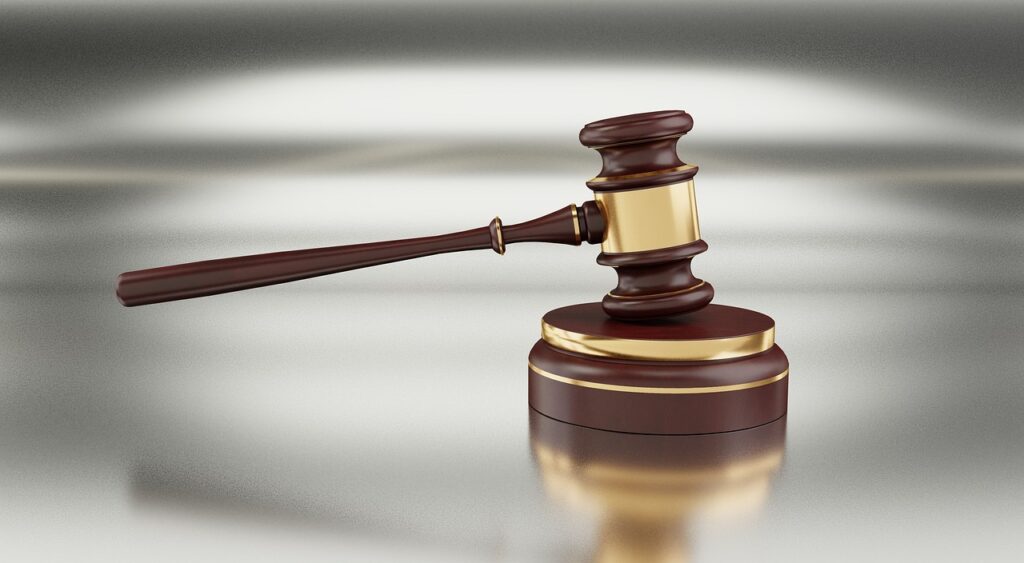Published on 27th June 2025
Authored By: Rishika Mishra
SVKM'S NMIMS Kirit .P. Mehta School of Law, Mumbai.
Introduction
India’s Supreme Court on 25 July 2019 handed a landmark judgment in suo motu writ petition with case no. In Re: Alarming Rise in the Number of Reported Child Rape Incidents[1]. The court rendered the decision at a time when social conscience towards sexual violations on children had been at its peak, and Kathua and Unnao-type rapes were sending shock waves throughout the nation and media hurricane[2]. The Court’s intervention was timely and justified, and a testament to strong commitment to uphold the rights of the child in a nation plagued by judicial delay, ineffectiveness in the enforcement of protection legislation, and social indolence.
But the context in which this judgment has been delivered is not one of contradiction. The then Chief Justice of India Ranjan Gogoi, who presided over this bench, himself was accused of serious sexual harassment[3]. Although the judgment has anchored its premises solidly on good legal and ethical standards, this parallel script sent goosebumps running down the backs of embarrassing questions regarding judicial integrity and issues of accountability pending over public imagination regarding the judicial process.
However, this case note criticizes the judgment legally and critically, examining its facts, implications, and mistakes and considering its larger implication on Indian child protection laws.
Facts
Supreme Court suo motu was moved on the grounds of statistical reports like the poor record in dispensation of justice. Protection of Children from Sexual Offences Act[4] revealed the news that during January-June 2019, 24,000 cases of child sexual abuse were registered and 911 cases only showed that the trial was finished[5]. This pendency depicted the failure of the justice system in disposing of such serious and sensitive crimes like child abuse.
India boasts highly comprehensive statutory protection of children under the POCSO Act, 2012[6], and the Juvenile Justice (Care and Protection of Children) Act, 2015[7]. The Act aims to render procedure child-friendly in lodging complaint, recording evidence, and trial within a reasonable time. The Court observed a huge lacuna between law and ground reality.
Identification of these loopholes, the Court mandated Senior Advocate V. Giri as Amicus Curiae and asked him to conduct an end-to-end assessment of POCSO case backlog. The Court also asked the Union Government’s interference in regard to making changes in the system. The Court also asked setting up POCSO special courts, establishing forensic laboratories, inducting expert legal minds, and initiating a public campaign[8].
Issues Raised
The Court’s deliberations were aimed at addressing a litany of issues:
- Inadequate Enforcement of the POCSO Act
The existence of unambiguous legal norms, the languid speed of proceedings and low conviction rates were a reflection of institutional inaction[9].
- Judicial Infrastructure and Personnel
Most glaring was the lack of special courts and congested judicial machinery, which significantly impeded the dispensation of justice[10].
- Victim Compensation and Support
System delays in compensating child victims also had a negative effect on their rehabilitation and recovery[11].
- Awareness and Sensitisation
There was criticism also about a lack of publicity in this regard concerning redress legally accessible under POCSO, besides insensitive treatment by the police as well as doctors in such cases[12].
- Need for Oversight and Accountability
An operational regulatory process was suggested to facilitate effective compliance with the instructions of the Court and with legislative provisions[13].
Contentions
Points Advanced by the Petitioners / Amicus Curiae
As a suo motu case, facto-wise, Supreme Court itself was the petitioner and highly depended on reports and recommendations filed by Amicus Curiae V. Giri and Registrar Surinder S. Rathi.
- 1. Deficiency of Special Courts
Most of the Amicus Curiae returns filed and placed before the Court was that the judicial framework in place in the case was not sufficient to address the special requirements of POCSO cases[14]. Overcrowded general criminal courts in no way were poised to address the timelines of the POCSO Act. Backlog due to absence of special and exclusive courts led to serious delays in hearing and judgments. Additionally, the courts lacked infrastructure and insensitivity to hold proceedings in an environment that would be child-sensitive, a reason inherent in the POCSO regime. The Supreme Court, maintaining such system failure in view, ordered that in all such districts where pendency of cases under POCSO is over 100, there will be one/designated Special Court solely for trial of only offence under the Act and otherwise not[15].
- 2. Forensic delays
Second most glaring flaw noticed was forensic report delay, adversely impacting time-bound trial and investigation completion. Complaints lodged with the Court were that there were insufficient Forensic Science Laboratories (FSLs) and insufficient staff and outdated equipment, and due to this, the judicial process was being delayed[16]. In the majority of cases, delay in scientific evidence processing resulted in slowing down or collapse of trials. Amicus Curiae recommended having sole FSLs in each district, especially for POCSO cases. While the Court relegated this specific suggestion to the backburner for future use, it did instruct Directors of operational State FSLs and state governments to undertake research in POCSO-related matters on a priority basis and do the same at the earliest[17].
- Shortage of Trained Legal Professionals
The case also brought to mind the age-old shortage of legally trained individuals, mainly Special Public Prosecutors and supportive sensitive staff sensitive to the psychological needs of children as victims. The Supreme Court acknowledged legal training as a necessity but where children are involved, insufficient. It re-emphasized that the appointees to such positions have to be child rights focused, have to undergo mandatory training on handling survivors of trauma, and have to be child-friendly in their approach[18]. The Court directed support person panels in each district to be constituted keeping these facts in view as well as in their representation being proportionate to the quantum of the cases pending disposal.
- 4. Awareness Deficit
The filings underscored the extreme deficiency of public knowledge in general concerning the POCSO Act. In rural, socio-economically under-developed pockets of society, a majority of citizens have no information on child sex abuse, how to report it, and safeguard by law. Amicus Curiae believed the nation can begin a public campaign of nationwide awareness. In this case, the Court imposed this penalty by directing the Ministry of Women and Child.Development to initiate steps to have short educational films on child abuse and legal remedies to be screened in cinema halls and broadcast on television channels at regular intervals[19]. Besides this, the Court directed child helplines in bold letters on such videos and in schools, public spaces, and institutions where children would be and need to be guided[20].
- Lack of Preventive Infrastructure
While law’s machinery is fundamentally concerned with redressal only after a happening, the preventive aspect of protection to children was greatly under-developed.The decree had also noted that lack of preventive education—i.e., child safety units in schools, neighborhood schemes, and training for parents and teachers—went unpunished and, in the vast majority, went unrecorded as an offense[21]. In addition, lack of child-sensitive reporting mechanisms in hospitals and police stations was deterring victims from reporting and using the mechanism of justice. Children courts’ Supreme Court action, manned by trained personnel, and sensitization was a response to this preventive vacuum and an endeavor to fill it from all sides[22].
Respondents’ (Government) Arguments:
Represented by Solicitor General Tushar Mehta, the Union of India acknowledged the gravity of the situation and submitted:
- Absence of Well-Rounded Budgetary Framework
While the Court has specifically ordered the Union Government to arrange for funding for establishing special POCSO courts in over 100 backlog case pending districts, the judgment has not exactly spoken about long-term financial management. There had been no blue-print for maintenance, procurement, or additional number of courts for the following years—most importantly, for the economically weaker states[23]. Failure to have a long-term funding agreement would render the special courts inefficient in the long run.
- Underreporting Unremedied
The judgment was concerned with the manner in which the registered cases were remaining stagnant. But it did not even touch upon the very real phenomenon of underreporting, which is frequent in the case of child sexual abuse. Underreporting also occurs due to social stigma, fear of retaliation, government suspicion, and coercion by their families, stopping victims and suspects from reporting. Publishing guidelines to active community-based reporting and defense against backlash on whistleblowers would have been more wise[24].
- Over Compensation and Rehabilitation
The Court rightly stressed reparation priority to the victims. Severe psychological traumatization to child survivors can, however, not be substituted with compensation. Post-trial mental rehabilitation, education support, or social reintegration measures were not mentioned or inferred in the sentence[25]. An opportunity was lost to integrate trauma-sensitive rehabilitative principles into the justice system.
- Shortfall of Adequate Emphasis on Provisions for Privacy
Though sympathetic, Court judgments were rarely concerned with anonymization and protecting the privacy of the victims. Shortcomings in preparation for ensuring leakage management of media, court materials protection, or anonymizing victims will absolutely leave survivors prone to re-trauma and stigmatization in society[26]. These safeguards in such cases against children are not procedural but inherently aligned with dignity and trust in the administration of justice.
Judicial Directions and Analysis
Liberal in terms of vocabulary and ambit, bench judgment halted useless procedure which would hinder the victims of justice. The Court expounded its rationale on five broad lines:
- Proactive Judicial Duty
While exercising suo motu powers, the Court reasserted once again its constitutional function as a guardian of the weak. It did not view the crisis as one of judicial failure but even of humanitarian loss[27].
- Enforcement of Existing Law
Judgement was not a call to initiate new legislations; it was a call for implementation of implemented legislations on time and in good faith. It was a realisation that judicial directions must be converted into administrative action[28].
- Institutional Accountability
Leading issuing specialist judges, forensic officers, prosecutors, and counsellors in cases of child abuse was based on the principle that justice had to be functional and prompt[29].
- Child-Centric Legal Culture
In addition to infrastructure, the Court even tried institutionalization of sensibility—compulsory training of all professionals who deal with child rights and trauma management.[30]
- Systemic Monitoring
Astutely recognizing orders would not suffice, the Court ordered review at intervals and forced the Solicitor General to furnish reports on enforcement and compliance state-wise.VI. Defects of Law and Systemic Lapses[31]
Rationale
While the approach of the Court is future-oriented, it is not gapless:
- No Master Budgetary Plan: While the Centre had allocated finances to set up new courts, there was no mention given about continuous money planning or delivery timelines.
- Underreporting: Underreporting due to fear, stigma, or family pressure was not even discussed by the Court in addressing outstanding FIRs.
- Rehabilitation Given a Backseat by Compensation: Although the Court considered relief to be financial, it was not given to providing long-term psychological counseling and rehabilitation sessions for the victims.
- Less Emphasis on Privacy Issues: There was less emphasis given in the judgment on how the courts and police officers would handle information that is confidential, given the fact that survivors of child sexual abuse are stigmatised.
Defects in Law & Policy
This case enumerated some of the child protection system of India’s long-standing vulnerabilities:
- Implementation lag: There continues to be intention-practice lag of law primarily due to administrative inertia[32].
- Evidence Law Deficiencies: The Indian Evidence Act falls short in terms of provision to control child witness testimonies and computer forensic evidence such as DNA on a balance of admissibility and privacy[33].
- Transparent Administration of Justice: Rural courts are transparent and under-resourced, thereby making them unaffordable to vulnerable complainants.
- Lack of Integrated Victim Protection Programs: India still does not have an integrated victim and witness protection policy in POCSO.[34]
Inference and Way Forward
The In Re: Alarming Rise in the Number of Reported Child Rape Incidents judgment is a milestone of Indian judicial tradition. It is a statement of an uncommon but needed judicial impulse to read and apply the law sensibly. Even during periods of lowest institutional belief, the Supreme Court role—its self-contradictions notwithstanding—has once again awakened a wish for an equal system that is human and accountable.
All of that being the case, the true effect of this ruling will be in its enforcement. There has to be a constant feedback loop between executive authority, the courts, and civil society so that this moment of reckoning is followed by permanent change. The war on child sexual assault cannot be fought in the courtrooms—it has to be fought in the schools, homes, communities, and institutions as well.
Conclusion
This case is not only a landmark in the child rights jurisprudence but also in the process of judicial activism in India. It fills a gap between intention of statute and real life. Above all, it gives a black-and-white message: that the judiciary will not remain a silent witness when children are butchered and the system betrays them. This message was needed.
Since this case hangs in the balance of the Court’s judgment, it is a chance to rethink India’s child protection system—quicker, safer, gentler, and more equitable so.
References
[1] In Re: Alarming Rise in the Number of Reported Child Rape Incidents (2019) 7 SCC 287.
[2] Kathua rape and murder case: Pathankot court convicts 6, Indian Express (10 June 2019) https://indianexpress.com/article/india/kathua-rape-and-murder-case-verdict-live-updates-5772856/ accessed 25 April 2025.
[3] Krishnadas Rajagopal, ‘CJI Ranjan Gogoi accused of sexual harassment’ The Hindu (20 April 2019) https://www.thehindu.com/news/national/cji-gogoi-accused-of-sexual-harassment/article26901259.ece accessed 25 April 2025.
[4] Protection of Children from Sexual Offences Act 2012, No 32 of 2012.
[5] National Crime Records Bureau, Crime in India 2019 (Ministry of Home Affairs 2020) https://ncrb.gov.in/en/crime-india accessed 25 April 2025.
[6] POCSO Act 2012, s 28.
[7] Juvenile Justice (Care and Protection of Children) Act 2015, No 2 of 2016.
[8] In Re: Alarming Rise (n 1) paras 1–2.
[9] Ibid para 3.
[10] Ibid para 2(i).
[11] Ibid para 2(ii).
[12] Ministry of Women and Child Development, Guidelines for POCSO e-Box and Childline 1098 (2018) https://wcd.nic.in accessed 25 April 2025.
[13] In Re: Alarming Rise (n 1) para 7.
[14] Ibid para 2(i).
[15] Ibid.
[16] Ibid para 3.
[17] Ibid para 4.
[18] Ibid para 2(iii).
[19] Ibid para 2(iv)(e).
[20] Ibid.
[21] Law Commission of India, Report No 262: The Death Penalty (Government of India 2015).
[22] In Re: Alarming Rise (n 1) para 2(ii).
[23] Ibid para 2(ii).
[24] Crime in India 2019 (n 5).
[25] In Re: Alarming Rise (n 1) para 2(ii).
[26] Indian Evidence Act 1872, s 118, s 114A
[27] Constitution of India, art 32.
[28] In Re: Alarming Rise (n 1) para 5.
[29] Ibid para 2(i)–(iii).
[30] Ibid para 2(iii).
[31] Ibid para 7.
[32] Ibid para 6.
[33] Indian Evidence Act 1872 (n 26).
[34] Law Commission of India (n 21).




